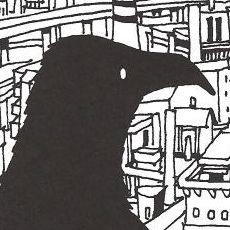Tag: science fiction
-
Discovering Eureka Seven; subtext and pop culture
/
/ ReviewsRead More →: Discovering Eureka Seven; subtext and pop cultureUnawares and unwilling, often the best anime passes me by. Deep down I think I always knew I would love Eureka Seven, but for whatever reason, like I said, it just passed me by. That is, until now. Maybe because it’s spring time; the grass is green and the leaves are greener, and I’m just…
-
Gunbuster – I Love You But I've Chosen Darkness
/
/ ReviewsRead More →: Gunbuster – I Love You But I've Chosen DarknessPutting aside the hyperbole and the fandom that seems to hold hands and religiously scream about every post-digisub series (myself included), the majority of newly crafted anime is objectively mediocre and creatively flat. Realizing this, yet still hopelessly attracted to spending an inexplicable amount of time rooted in front of the stuff, it’s about time…
-
Again the fate of the world is in the hands of 14 kids (Bokurano)
/
/ ReviewsRead More →: Again the fate of the world is in the hands of 14 kids (Bokurano)Its been a while readers, 7 days to be precise, and as we all know, 7 days on internet may as well be a lifetime. I won’t labor you with the details, but suffice to say that this gradual slow down in blogging is sadly down to cliche reasons; I have found a new job…
-
Reflecting on Kemonozume – Too cool for otaku
/
/ ReviewsRead More →: Reflecting on Kemonozume – Too cool for otakuIt’s fair to say that the creative staff “working on” (more like playing with) Kemonozume must have had so much fun, from flying heads and sexed up monkeys to a perverted old man shoving a pair of severed female arms down his skanky speedos – this is a show that clearly had no pretension of…
-
Giant Robo – Man-size anime
/
/ ReviewsRead More →: Giant Robo – Man-size animeAbly piloting his nuclear powered giant robot (sensibly dubbed "Giant Robo"), Daisaku Kusama is a brave young kid charged with the every day fate of saving the world. We join his story with his team mates in the internationally renowned "Experts of Justice" jumping (and teleporting!) from country to country fighting off the monstrous terrorists…
-
Kemonozume – 10 – Sex-starved monkeys and eating fish with giant detectives
/
/ ReviewsRead More →: Kemonozume – 10 – Sex-starved monkeys and eating fish with giant detectivesSince we’re now hitting the final couple of episodes, Kemonozume is building up to an action packed climax. The villain, or “big boss”, has turned out to be the fat Ohba – I liken his bizarre appearance to that of a clown, and deep down, we’re all scared of clowns – their smiley made-up faces…
-
Kemonozume – 9 – Old habits die hard
/
/ ReviewsRead More →: Kemonozume – 9 – Old habits die hardStill on the run from the Kifuuken, we join the love birds Yuka and Toshihiko aimlessly wandering down vast and empty roads when they are offered a lift by an old married couple. Their journey (squeezed inside a white van) is a chance for them to reflect on their young relationship, inspired by the beautiful…
-
Kemonozume – 8 – Hard violence, hard sex, hard feelings
/
/ ReviewsRead More →: Kemonozume – 8 – Hard violence, hard sex, hard feelingsAt the beginning of this episode a boy student is excitedly kissing his innocent girlfriend for the first time. They hold each other in an emotional embrace, it is a pivotal moment in their lives, “Ah the day has finally come, Takako-Chan’s warm, soft, slippery thing is in my mouth…”. But the boy gets too…
-
Sci-Fi Harry – Does exactly what it says on the tin
/
/ ReviewsRead More →: Sci-Fi Harry – Does exactly what it says on the tinUneducated and ignorant, my first taste of this most leafy of seasons is the earnestly dubbed “Sci-Fi Harry”. I knew absolutely nothing of this show before today and the only reason I figured I’d give it a try is because of the wonderfully unprentious name. It is literally what it says on the tin –…
-
Elfen Lied – 8 through 10 – Subverting the cute
/
/ ReviewsRead More →: Elfen Lied – 8 through 10 – Subverting the cuteAgain Elfen Lied defies it’s pretty style and delivers a trio of episodes that are anything but. Subverting the look of its cute characters, it clearly delights in extreme mental and physical abuse — the disgusting bludgeoning of a helpless young puppy aptly symbolises how innocence and weakness is exploited in Elfen Lied, and that’s…
